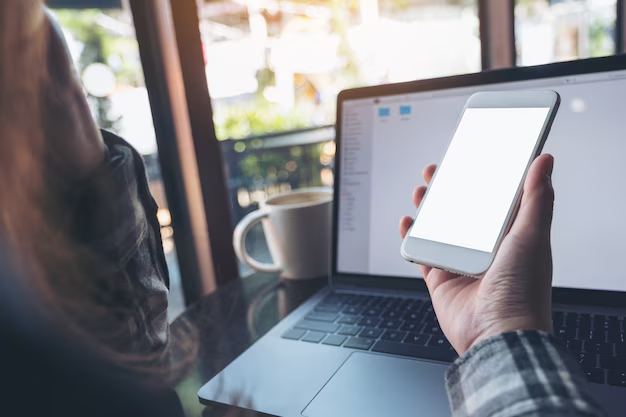Effortless Ways to Transfer Photos from Your iPhone to a Chromebook
Imagine this: you've just returned from a once-in-a-lifetime vacation, your iPhone brimming with stunning photos and videos capturing every unforgettable moment. You want to view these memories on your Chromebook, but aren't quite sure where to begin. Whether you're looking to clear space on your device or simply want a more comfortable viewing experience on a larger screen, transferring photos from an iPhone to a Chromebook can seem like a daunting task. Worry not! With this comprehensive guide, transferring your cherished memories will be as easy as snapping a selfie.
Why Transfer Photos from iPhone to Chromebook?
Transferring photos from iPhone to Chromebook offers several benefits:
- Storage Management: Free up space on your iPhone for new photos and apps.
- Enhanced Viewing: Enjoy your memories on a larger screen with better resolution.
- Backup Security: Ensure your photos are backed up and prevent data loss.
- Easy Sharing and Editing: Access more tools for editing and sharing photos.
Getting Started: Preparing Your Devices
Before diving into the transfer methods, ensure that your devices are ready:
- Update Your Devices: Make sure your iPhone and Chromebook are both updated to their latest operating systems for optimal functionality.
- Check Connections: Ensure both devices are connected to the same Wi-Fi network if you're using cloud services.
- Install Necessary Apps: Some methods may require you to install third-party apps.
Method 1: Transfer via Google Photos
Using Google Photos is one of the most seamless ways to transfer photos between an iPhone and a Chromebook.
Step-by-Step Guide
- Download Google Photos App: Install the Google Photos app from the App Store on your iPhone.
- Sign In: Log in with your Google account.
- Backup Option: Go to Settings > "Back up & sync" and toggle on the feature.
- Select Upload Size: Choose between "High quality" for free, unlimited storage or "Original" for full resolution with limited storage.
- Upload Photos: The app will automatically start uploading your photos to the cloud.
- Access on Chromebook: Open your Chromebook, go to the Google Photos website, and sign in with the same Google account to view or download your photos.
Key Benefits
- Unlimited Storage: If opting for "high quality," storage is free.
- Automatic Backup: Syncs photos automatically when connected to Wi-Fi.
Method 2: Transfer via USB Connection
For those who prefer a direct approach without relying on cloud storage, transferring photos via USB may be the best option.
Step-by-Step Guide
- Requirements: You'll need a USB-C to Lightning cable or a USB adapter compatible with your Chromebook.
- Connect Devices: Plug your iPhone into your Chromebook using the cable.
- Unlock iPhone: Make sure your iPhone is unlocked to allow access.
- Trust Device: A prompt will appear on your iPhone asking you to "Trust This Computer." Confirm to proceed.
- Open Files App: On your Chromebook, open the Files app.
- Navigate to DCIM Folder: Find your iPhone under "Devices" and locate the DCIM folder.
- Drag and Drop: Select and drag the photos from the DCIM folder to a desired location on your Chromebook.
Key Benefits
- Direct Transfer: No internet connection is required.
- Full Quality Photos: Photos are transferred in their original quality.
Method 3: Transfer via iCloud
Leveraging Apple's cloud service, iCloud, is another effective way to access your photos.
Step-by-Step Guide
- Ensure iCloud is Enabled: On your iPhone, go to Settings > [Your Name] > iCloud > Photos and ensure "iCloud Photos" is enabled.
- Log Into iCloud: On your Chromebook, navigate to iCloud.com and log in with your Apple ID.
- Access Photos: Click on the Photos icon to view all your iCloud photos.
- Download Photos: Select the photos you want and click the download icon to save them to your Chromebook.
Key Benefits
- Integration with Apple Ecosystem: Seamless sync across Apple devices.
- Access Anywhere: Access your photos from any device with an internet connection.
Frequently Encountered Issues and Solutions
Issue 1: Photos Not Showing Up in iCloud
- Solution: Ensure that your iPhone is connected to Wi-Fi and has enough iCloud storage space.
Issue 2: USB Connection Doesn't Work
- Solution: Check if your cables are functioning properly and that iPhone drivers are updated on your Chromebook.
Issue 3: Google Photos Not Syncing
- Solution: Check app permissions to ensure Google Photos is allowed to access your photos.
Quick Takeaways and Practical Tips 🎯
- 📸 Choose According to Need: Use Google Photos for automatic backup, USB for direct transfer, and iCloud for Apple-integrated access.
- 🚀 Ensure Strong Wi-Fi: A strong internet connection can make transferring via cloud services faster and more efficient.
- 🔒 Regular Backups: Always keep your photos backed up to prevent loss.
Choosing the Best Method for You
Your ideal method for transferring photos depends on your specific needs and technical comfort level. Whether you prefer the fast, high-quality transfer of USB, the seamless cloud integration of iCloud, or the generous storage options of Google Photos, each method provides unique benefits. Explore these options and find what fits best into your lifestyle, ensuring your cherished memories remain safe and easily accessible.
With this guide in hand, you're equipped to tackle any photo transfer challenges, keeping your memories intact while enhancing your digital experience. Happy snapping!

Related Topics
- How Can I Transfer a Video From Iphone To Computer
- How Can I Transfer Apps From Iphone To Ipad
- How Can I Transfer Apps From One Iphone To Another
- How Can I Transfer Contacts From Iphone To Iphone
- How Can I Transfer Contacts From One Iphone To Another
- How Can I Transfer Data From Iphone To Android
- How Can I Transfer Data From Iphone To Iphone
- How Can I Transfer Data From Iphone To Samsung
- How Can I Transfer Files From Android To Pc
- How Can I Transfer From Iphone To Samsung